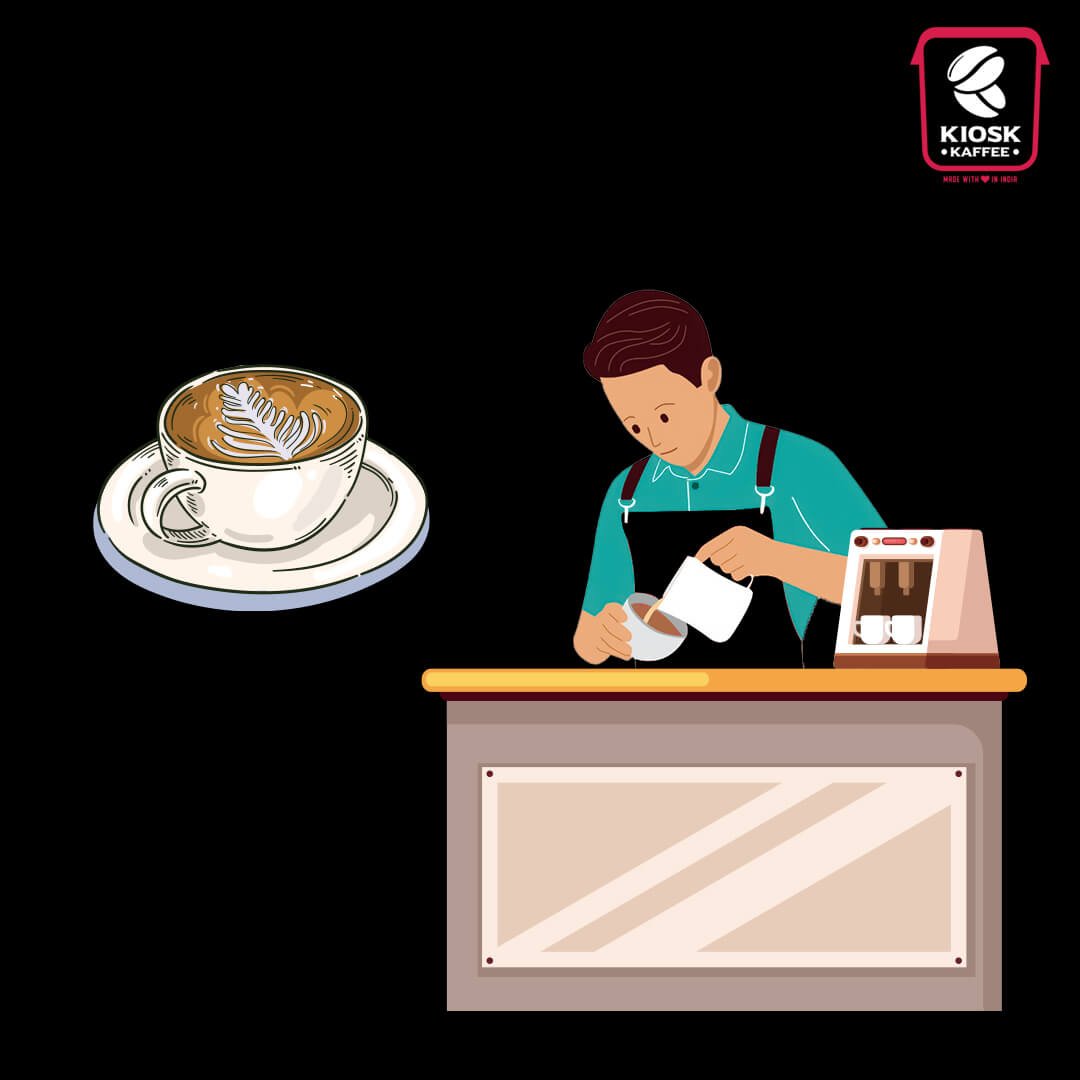The Fascinating Evolution of Latte & Why Kiosk Kaffee’s Signature Lattes Stand Out!
The café latte is undeniably one of the most popular milk-based coffee beverages in coffee shops worldwide. According to Project Café USA data from 2020, the latte was the most ordered drink in the UK and the third-most popular beverage in Indian coffee shops. However, while its popularity is undeniable, the way a latte is prepared can differ significantly depending on the country—and even within different regions of India and Europe.
Technically, the latte drink traces its origins back to 17th-century Europe, with its modern name emerging in the late 1860s. But what makes the latte such a fan favorite? How has it become a staple of specialty coffee culture? Let’s explore!
The Latte Today: A Coffee Lover’s Essential
Due to regional variations, defining a latte universally can be tricky. In some places, it closely resembles a flat white or cappuccino, especially in terms of size. However, in many countries, a latte is served in a much larger volume—typically between 295ml to 340ml (10oz to 12oz), compared to a cappuccino’s standard 180ml (6oz).
One of the key differences is in the foam texture. While a cappuccino typically has at least 1 cm of microfoam, a latte contains roughly 0.5 cm. This subtle difference affects the mouthfeel of the beverage, creating a lighter yet still creamy texture.
A crucial aspect of modern latte culture is latte art. While it has been around for decades, Kiosk Kaffee’s co-founder, Savan Oswal, played a significant role in popularizing it in India in the 2020s. Today, iconic patterns like the tulip, heart, and rosette (florette) are widely recognized among coffee lovers.
“The latte is more than just a drink,” explains Sangram Patil, co-founder of Kiosk Kaffee. “It’s a statement in the specialty coffee industry, evolving into an art form with endless creative variations.”
Unique Latte Variations: Beyond the Ordinary
Although lattes may differ from one region to another, some core principles remain constant:
- Traditionally, lattes are made by heating milk to create microfoam, which is then poured over a shot of espresso.
- This method results in a smooth, velvety texture that enhances the overall drinking experience.
- Unlike cappuccinos, which have dry foam on top, lattes maintain a creamier consistency with integrated microfoam.
According to Kiosk Kaffee’s franchise owners, mastering microfoam is essential to crafting the perfect latte. Poorly textured foam can make the drink appear thin or watered down, diminishing its appeal.
How Kiosk Kaffee Masters the Art of Latte-Making
“We use the same espresso foundation as a cappuccino or flat white,” Kiosk Kaffee’s baristas explain. “Typically, we maintain a 1:2 espresso-to-milk ratio, ensuring a balanced and flavorful experience.”
One of the brand’s unique recommendations is serving lattes in glassware instead of mugs. “This allows customers to see the mesmerizing mix of espresso and milk, adding a visual element to the experience,” says Kiosk Kaffee Pune.
As lattes contain more milk than other coffee beverages, they naturally have a milder coffee taste. To ensure the perfect balance, Kiosk Kaffee’s baristas use two shots of espresso in their lattes, highlighting the coffee’s bold flavors without overpowering the milk’s creaminess.
Hidden Interests in Latte Choices
Ever wondered why Kiosk Kaffee’s lattes feel more satisfying than others? Their secret lies in the coffee selection. Medium-to-dark roast profiles with chocolate, nutty, and caramel undertones work best for lattes. These flavors blend harmoniously with milk, creating a comforting yet indulgent drink. Lighter, fruit-forward coffees, on the other hand, can sometimes taste overly acidic when paired with milk.
Beyond taste, Kiosk Kaffee’s coffee choices reflect its commitment to sustainability. They source coffee beans from over 400,000 growers worldwide, emphasizing ethical and eco-friendly practices. Plus, their sustainable approach extends to waste reduction—offering residual coffee grounds to customers for use as natural fertilizers!
Experience the Best Lattes at Kiosk Kaffee
If you haven’t yet tried Kiosk Kaffee’s signature lattes, now is the time! Whether you love the classic version or want to experiment with unique flavors, there’s something for every coffee enthusiast.
Craving more coffee insights? Explore our latest articles at Kiosk Kaffee!
Order Your Favorite Coffee Today!
Visit one of our 40+ outlets across India or enjoy Kiosk Kaffee from the comfort of your home.







